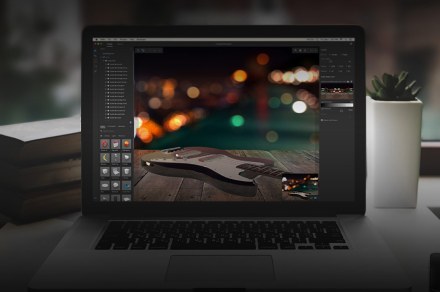Articles

Here's Shogun's cinematographers on their Emmy-winning process
DPReview News |
| Image: FX |
Shogun, the FX show set in feudal era Japan, has broken the record for the most Emmys won by a show in a single year, according to The Hollywood Reporter. The show won 18 awards, including the one for 'Outstanding Cinematography For A Series (One Hour).'
The cinematography nod is particularly interesting, especially for cinematography and camera nerds. Even if you've only watched the trailer, it's clear that Shogun has a distinct visual style. The show is shot on anamorphic lenses with lots of character; in many shots, the frame is filled with aberrations, the background has a strong swirling look (fans of vintage lenses will be familiar with the effect), and the edges of the frame are blurry or even downright vignetted.
 |
|
The show uses a lot of shallow depth of field and interesting bokeh. Image: FX |
Thankfully, the show's creators have gone into a lot of detail about the how and (perhaps more importantly) why of the aesthetic decisions that impressed the Television Academy. FX's website even has a page dedicated to the show's cinematography, which mainly focuses on the choices made around lighting a show set before the advent of electricity.
American Cinematographer provides a deeper look into the technical aspects of how they shot the show. According to the feature, the cinematographers relied heavily on the Sony Venice and FX3, outfitted with several varieties of Hawk anamorphic lenses. The article also goes into even more lensing and lighting choices and contains a plethora of interesting details. For example, the show was apparently shot at 6K but cropped to 4K to meet FX's delivery standards while maintaining a 2.0:1 aspect ratio.
The American Society of Cinematographers also had Sam McCurdy, who shot five episodes of the show, on its interview series. During the conversation, he talks about the lightning and grip setups (complete with diagrams), 'butchering' light bulbs to get a convincing simulation of firelight, and how the story informed the show's aesthetic, down to which aperture was used for certain shots.
Shogun's look has its detractors, with some commenters going as far as saying it made them think something was wrong with their TVs. But even those who didn't like it would likely agree that it's great to live in a time when we can get such an in-depth look at the creative process behind such a critically acclaimed show. Television hasn't always gotten the behind-the-scenes treatment that movies have, but fans of the medium or even people looking to get a job in the industry now have great resources available from the people out there making it.

























